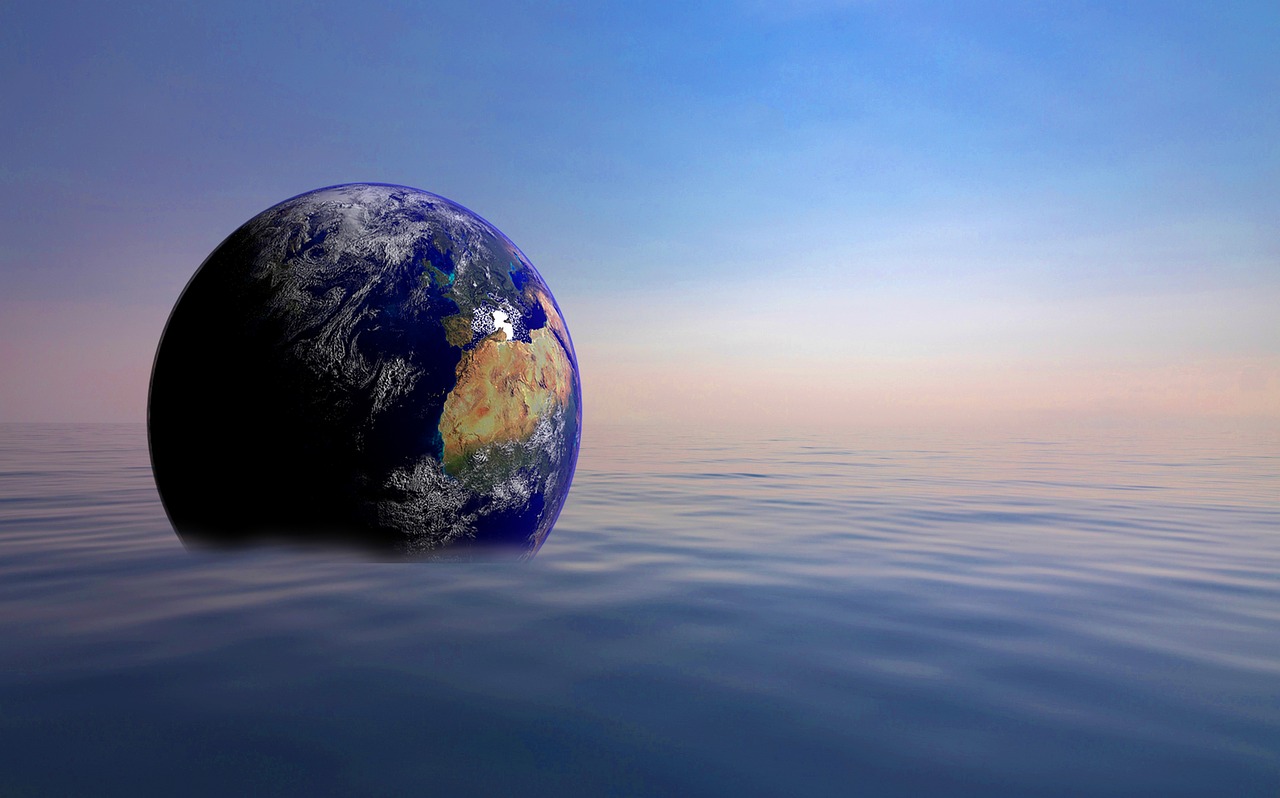Long before life began, Earth was covered in water. Today, water vapor fills the atmosphere, and large ice fields dominate the poles, complemented by the beauty of aquatic landscapes across the continents. Our blue planet owes its fruitful development to this clear, inorganic solvent. But how could a single chemical substance influence the evolution of an entire planet?
Glacial Ice and Its Impact
Roughly 10% of the world’s land area is covered in glacial ice, a mono-mineralic rock made of solid H2O. Masses of glacial ice form ice caps and ice sheets, as well as the largest glaciers on Earth. In North America, the largest glacier is the Bering Glacier, covering approximately 5,000 square kilometers of the Alaskan Peninsula. Like all glaciers, the Bering Glacier began as a mass of ice compressed by immense pressure under accumulating snow.
Glaciers, like rivers, gradually move from high to low elevations, constantly shifting and eroding the landscapes around them. As they move, massive glaciers scour hills and mountainsides, carving U-shaped valleys, sometimes hundreds of meters deep. When glaciers melt along the coast, rounded depressions flood with a mix of seawater and glacial meltwater, creating fertile ecosystems called fjord estuaries. Fjord estuaries, unlike others, are filled with deep, cold water, enabling large, open-ocean creatures like whales to live closer to the shore. In Kenai Fjords National Park, humpback whales migrate over 4,300 kilometers every spring to feed on krill in this fjord estuary’s nutrient-rich, brackish water.
The Colorado River and the Grand Canyon
About 3,500 kilometers south of Kenai Fjords National Park, the Grand Canyon in Arizona stands as a testament to the power of water and time. Five million years of running water, combined with rock uplift, have eroded a deep ravine into the American state of Arizona. The cliffs of the Grand Canyon, which stand over 1,800 meters tall, were carved by the Colorado River, which flows across the 336,000-kilometer Colorado Plateau in the southwestern United States.
The Colorado River is most famous for sculpting one of the world’s natural wonders, but it is also a life-giving force for some of North America’s driest regions. Winding its way across the desert, the Colorado River supplies fresh water to a variety of arid ecosystems, including desert scrub, boreal forests, and pinyon-juniper woods. Along the stunning Grand Canyon, the Colorado River nurtures an amazing array of life, including more than 90 mammals, 300 birds, and 1,700 different plants.
This rushing river has also played an important role in human history. For roughly 12,000 years, the Colorado River has provided water for drinking and irrigation to local communities. The Puebloans were the first people to build complex masonry structures along the cliffs that line the Colorado River. Later, the region was settled by a number of tribes, including the Havasupai, who occupy parts of the Grand Canyon today.
The Amazon River and Rainforest
South of the Equator, the Amazon River Basin spans six densely populated countries and nourishes the world’s most diverse terrestrial ecosystem, the Amazon Rainforest. The Amazon River flows from the Andes Mountains in Peru to the coast of Brazil, where it discharges into the Atlantic Ocean. It is the largest river in the world by volume and sustains millions of species, including colorful birds and playful primates living in the Amazon Rainforest.
The rainforest supports a diverse ecosystem and helps regulate the region’s tropical climate. Trees in the Amazon recycle rainwater through a process known as transpiration. Every day, billions of trees pump countless tons of water into the atmosphere, creating “flying rivers” that influence weather patterns and supply fresh water to millions of people.
The Great Barrier Reef
The Amazon Rainforest and Australia’s Great Barrier Reef are both vital to our planet’s ecology. Stretching nearly 2,300 kilometers and containing over 3,000 individual reefs, the Great Barrier Reef is the largest single structure created by living organisms. Its beauty comes from its intricate build of hard corals—marine animals that build calcium carbonate skeletons, forming the reef’s three-dimensional structure.
Roughly 600 species of corals live in the Great Barrier Reef, alongside more than 1,500 species of fish, 215 species of birds, and six of the seven marine turtle species in the world today. Tropical coral communities, like the Great Barrier Reef, support 25% of all known marine life and shield coastlines from damaging waves.
Unfortunately, coral communities are rapidly shrinking due to rising ocean temperatures. When waters get too warm, it disrupts the delicate, symbiotic relationship between coral and microscopic algae called zooxanthellae. These algae supply their coral hosts with food through photosynthesis. When ocean temperatures rise, corals expel their microscopic symbionts, causing the coral to appear white or bleached. While corals can recover from bleaching, continued increases in ocean temperatures could lead to the death of the majority of coral species. In 2016, a single warming event along the Great Barrier Reef destroyed more than 20% of its corals. Scientific models predict a two-degree Celsius increase in ocean temperatures by 2050, which may destroy up to 99% of the Earth’s coral reefs.
Victoria Falls and the Zambezi River
Another natural wonder affected by climate change is Victoria Falls in southern Africa, the world’s largest curtain of falling water, stretching a remarkable 1,700 meters across. In 2019, after a long drought driven by climate change, Victoria Falls shrunk from a colossal waterfall to a mere trickle.
Like the Colorado and Amazon Rivers, the Zambezi River supports a myriad of plants and animals and played a critical role in the evolution of early humans. Some scientists believe anatomically modern humans originated in southern Africa, near the Zambezi River. Around the river basin, archaeologists have uncovered dozens of human artifacts, dating back thousands of years. The Zambezi River has potentially nurtured human development from the Stone Age all the way to the modern era.
Conclusion
In all its forms, water has influenced the Earth’s development and topography, creating a habitable world for millions of species. Water may be a tasteless, colorless, and transparent substance, but it has transformed the Earth into the beautiful blue planet we know today.

